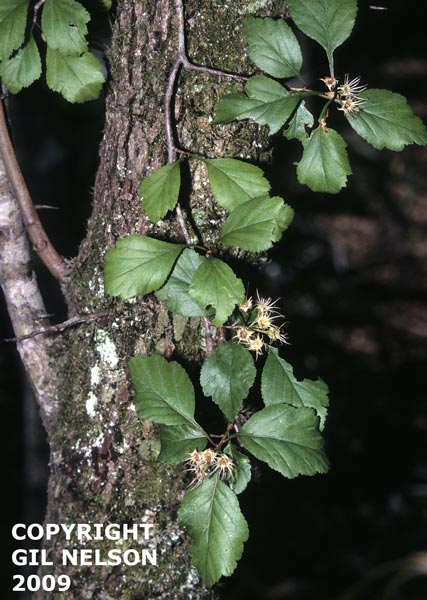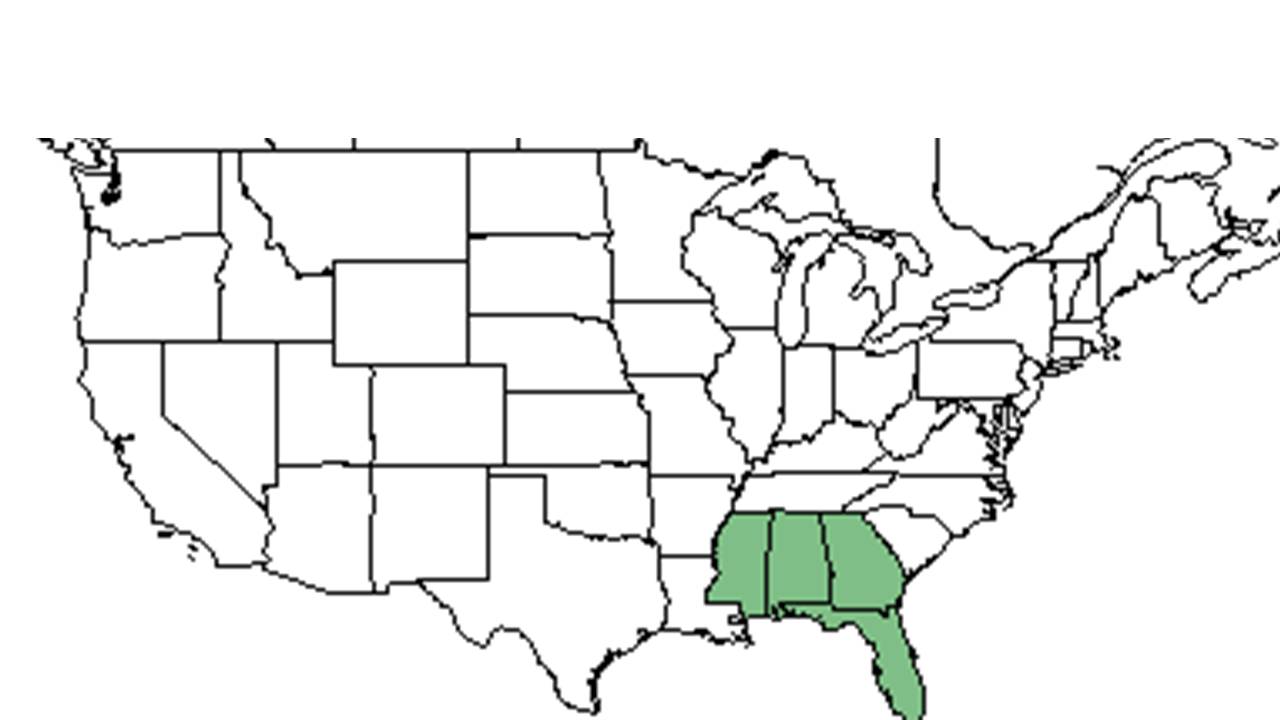Difference between revisions of "Crataegus pulcherrima"
KatieMccoy (talk | contribs) (→Description) |
KatieMccoy (talk | contribs) |
||
| Line 29: | Line 29: | ||
==Ecology== | ==Ecology== | ||
===Habitat=== <!--Natural communities, human disturbed habitats, topography, hydrology, soils, light, fire regime requirements for removal of competition, etc.--> | ===Habitat=== <!--Natural communities, human disturbed habitats, topography, hydrology, soils, light, fire regime requirements for removal of competition, etc.--> | ||
| − | ''C. pulcherrima'' can be found in upland mixed hardwood communities, longleaf pine-oak forests, longleaf pine-scrub oak sand ridges, and holly-mixed hardwood forests | + | ''C. pulcherrima'' can be found in upland mixed hardwood communities, longleaf pine-oak forests, longleaf pine-scrub oak sand ridges, and holly-mixed hardwood forests. It seems to prefer sandy soils, and can be found in well-drained soil occurring over limerock. This species also occurs more frequently in stands with a low second growth of hardwoods<ref name="fsu"/>. |
| − | Associated species include Longleaf pine, Loblolly pine, Shortleaf pine, and oak species | + | Associated species include Longleaf pine, Loblolly pine, Shortleaf pine, and oak species<ref name="fsu"/>. |
===Phenology=== <!--Timing off flowering, fruiting, seed dispersal, and environmental triggers. Cite PanFlora website if appropriate: http://www.gilnelson.com/PanFlora/ --> | ===Phenology=== <!--Timing off flowering, fruiting, seed dispersal, and environmental triggers. Cite PanFlora website if appropriate: http://www.gilnelson.com/PanFlora/ --> | ||
Revision as of 17:51, 14 April 2016
| Crataegus pulcherrima | |
|---|---|

| |
| photo by Gil Nelson | |
| Scientific classification | |
| Kingdom: | Plantae |
| Division: | Magnoliophyta - Flowering plants |
| Class: | Magnoliopsida – Dicotyledons |
| Order: | Rosales |
| Family: | Rosaceae |
| Genus: | Crataegus |
| Species: | C. pulcherrima |
| Binomial name | |
| Crataegus pulcherrima Ashe | |

| |
| Natural range of Crataegus pulcherrima from USDA NRCS Plants Database. | |
Common name: beautiful hawthorn
Contents
[hide]Taxonomic notes
Synonyms: Crataegus pulcherrima var. pulcherrima; C. macilenta Beadle; C. lenis Beadle; C. abstrussa Beadle; C. ancisa Beadle; C. austrina Beadle; C. contrita Beadle; C. concinna Beadle; C. macilenta Beadle; C. pinetorum Beadle; C. illustris Beadle; C. robur Beadle; C. tecta Beadle; C. incilis Beadle; C. intricata Lange
Description
A description of Crataegus pulcherrima is provided in The Flora of North America. Crataegus pulcherrima is a small understory tree, usually with a single main trunk and bushy crown. It's bark tends to be thickish, dark gray, and rough, or broken into small blocks[1].
Distribution
Ecology
Habitat
C. pulcherrima can be found in upland mixed hardwood communities, longleaf pine-oak forests, longleaf pine-scrub oak sand ridges, and holly-mixed hardwood forests. It seems to prefer sandy soils, and can be found in well-drained soil occurring over limerock. This species also occurs more frequently in stands with a low second growth of hardwoods[1].
Associated species include Longleaf pine, Loblolly pine, Shortleaf pine, and oak species[1].
Phenology
It has been observed flowering in March, April, and May (FSU Herbarium). Fruiting has been observed in May, June, September, and October (FSU Herbarium).
Conservation and Management
Cultivation and restoration
Photo Gallery
References and notes
Florida State University Robert K. Godfrey Herbarium database. URL: http://herbarium.bio.fsu.edu. Last accessed: June 2014. Collectors: R. A. Norris, Robert K. Godfrey, and R. Komarek. States and Counties: Florida: Gadsden, Jackson, Leon, Wakulla, and Washington. Georgia: Grady.
- ↑ Jump up to: 1.0 1.1 1.2 Florida State University Robert K. Godfrey Herbarium database. URL: http://herbarium.bio.fsu.edu. Last accessed: June 2014. Collectors: R. A. Norris, Robert K. Godfrey, and R. Komarek. States and Counties: Florida: Gadsden, Jackson, Leon, Wakulla, and Washington. Georgia: Grady.